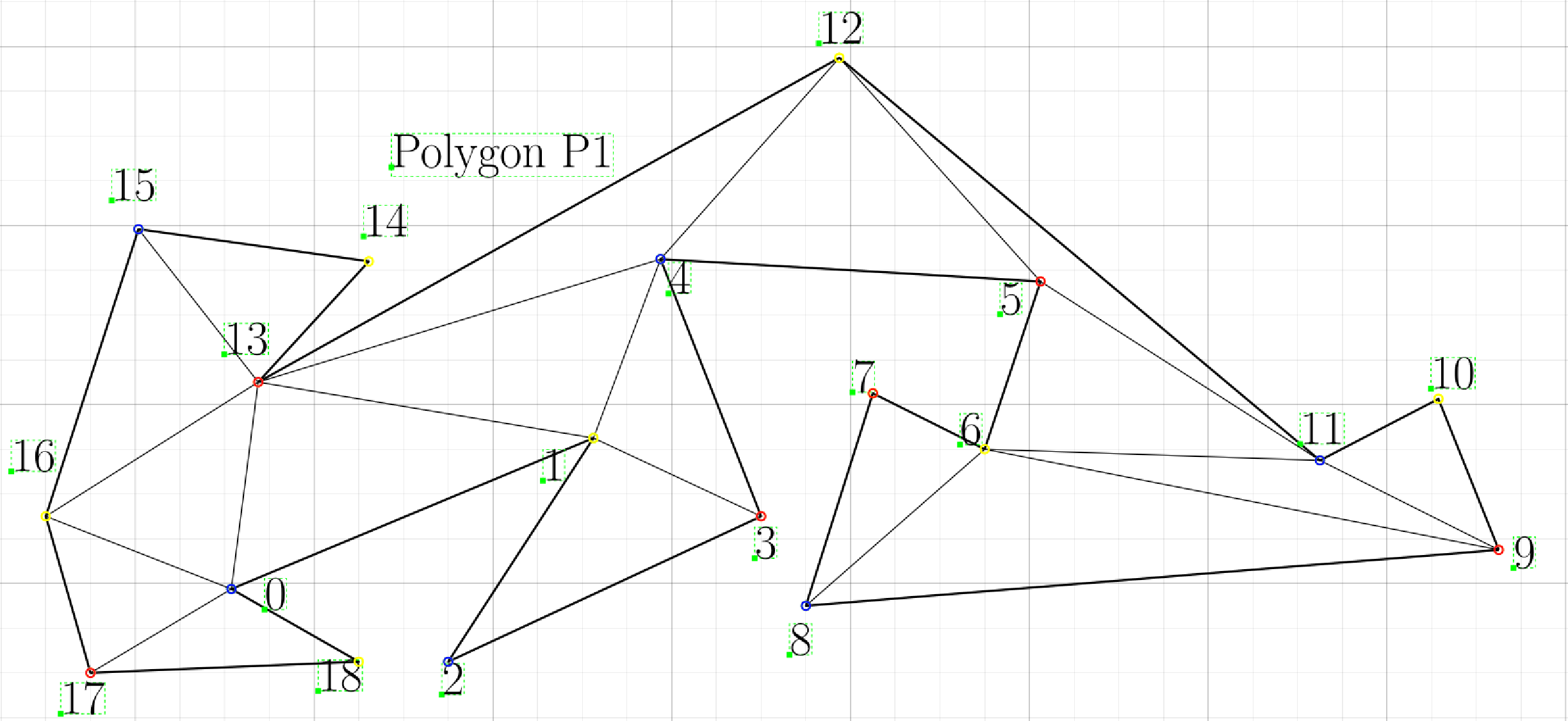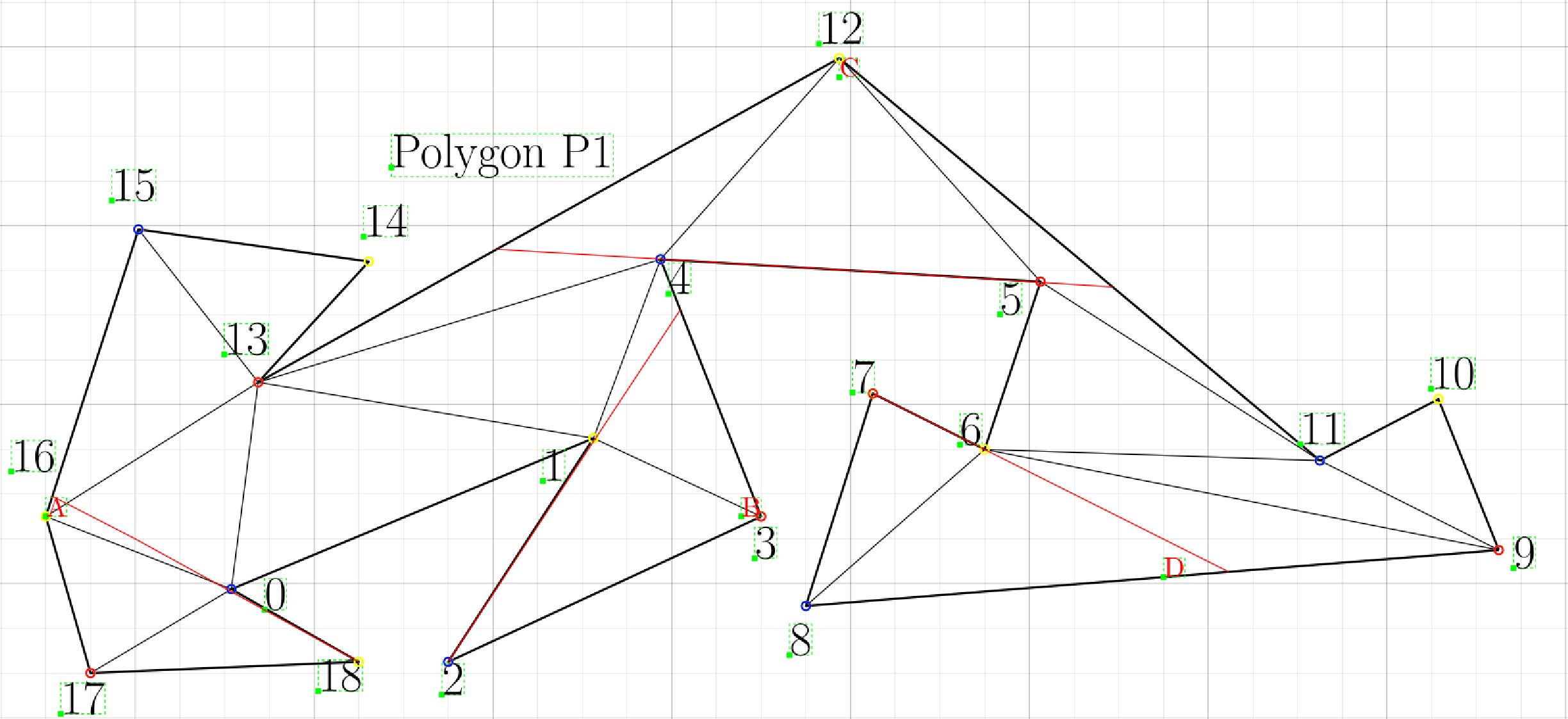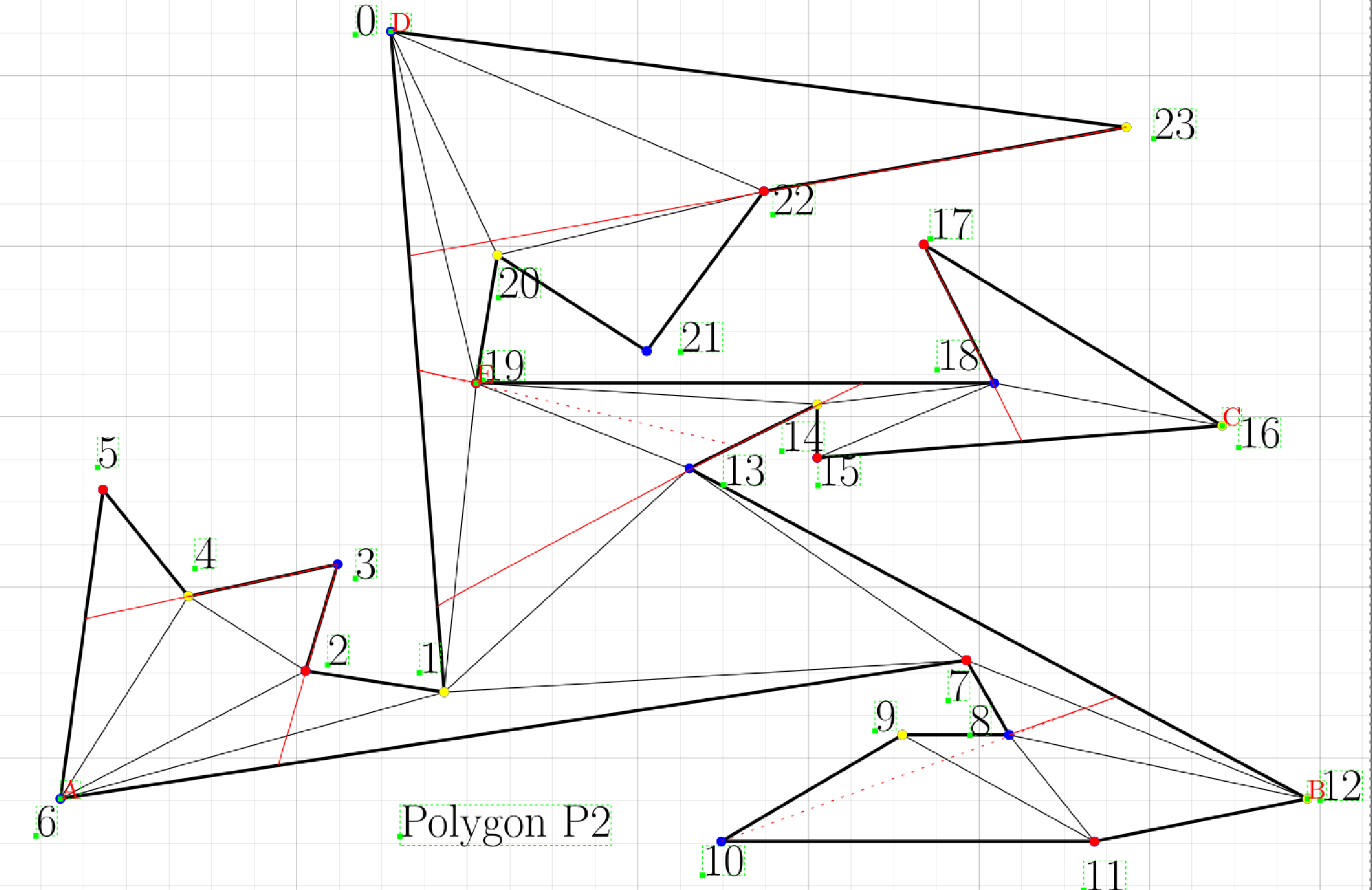3.1 KiB
3.1 KiB
HW1
Problem 1
-
-
In this graph, there are 3 forced diagonals (7-12, 6-14 and 5-17) which divide this graph in to 4 parts. For the right most part it is a blunt nose fox so it has 4 ways of triangulations; for the second one there is only one way because it is a fox; the third one is again, a blunt nose fox with 4 ways; as for the last part we have to do case analysis:
-
- use 4-17 but not 2-5: there are two convex polygon with 3 and 6 vertices, so there are 14*1=14 ways to triangulation
-
- use 2-5 but not 4-17: for the graph under 2-5, it is a convex polygon with 4 vertices so there are 2 ways; for the upper part, 2-17 is a forced diagonal so it can be treated as a 4 vertices polygon so overall it has 2*2=4 ways
-
- not use both 4-17 and 2-5: for the last situation, 3-17 is a forced diagonal so it has 5*1*1=5 ways
Overall, there are 4*1*4*(14+4+5)=368 distinct ways to triangulation this graph
-
-
-
-
In this graph, there are a pair of diagonals that are mutual exclusive: 1-6 and 0-2, if we do case analysis based on that:
-
- use 1-6: the left side is a convex polygon with 8 vertices so it has 6 ways; the right side is a blunt nose fox so it has 4 ways
-
- use 0-2: then there are two forced diagonals (0-6 and 2-6). If we connect them, then there is a convex polygon with 7 vertices on the left and a fox on the right. In total, there should be 1*1*1*42 ways
Over all, there are 132*4+42=570 distinct ways of triangulations.
-
-
Problem 2
-
-
- As the graph above, there are 6 reds, 6 blues and 7 yellows, then we put guards on either reds or blues and we can get 6 guards.
-
-
- As the graph above, there are 8 reds, 8 blues and 8 yellows, then we put guards on any of reds, yellows or blues and we can get 8 guards.




